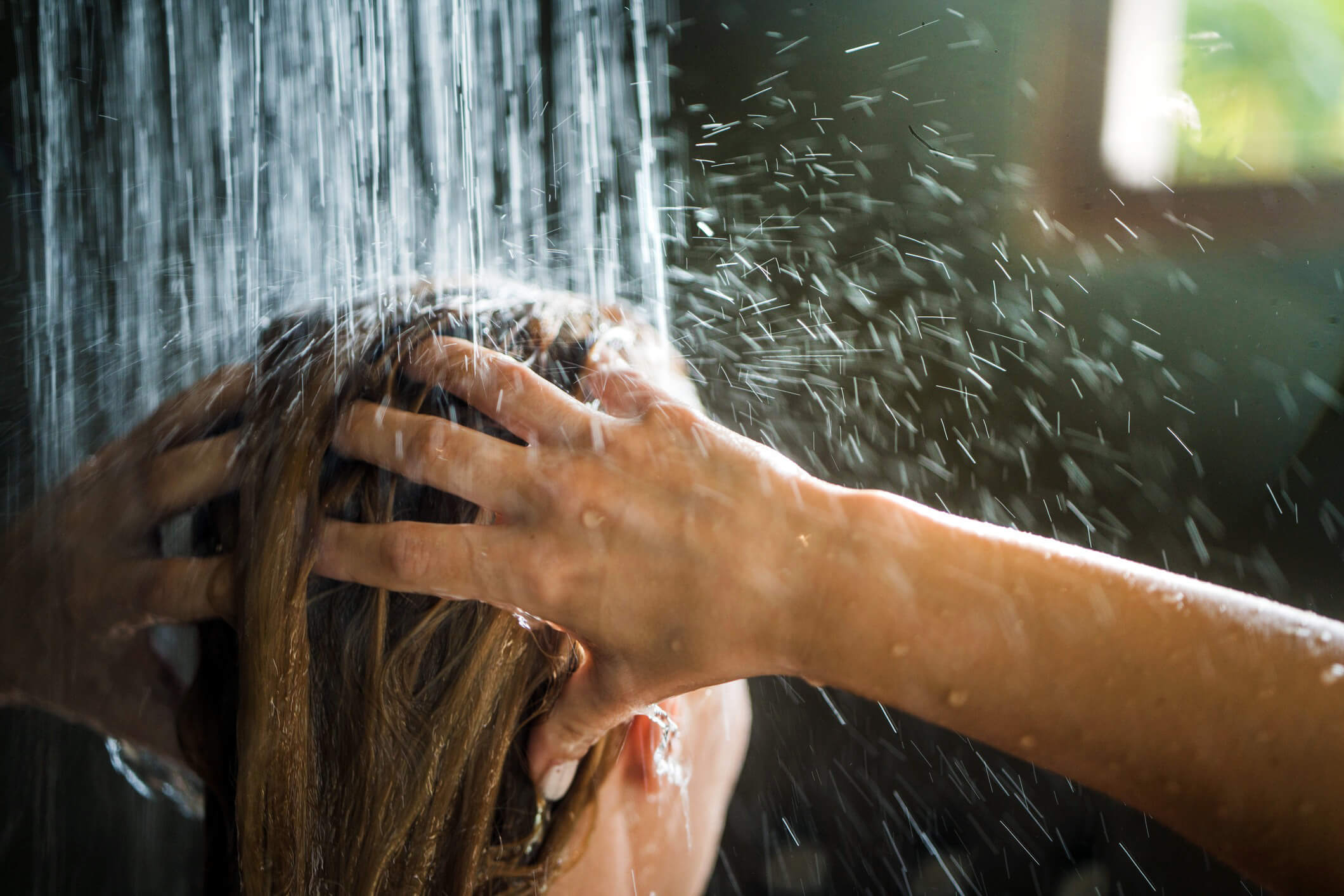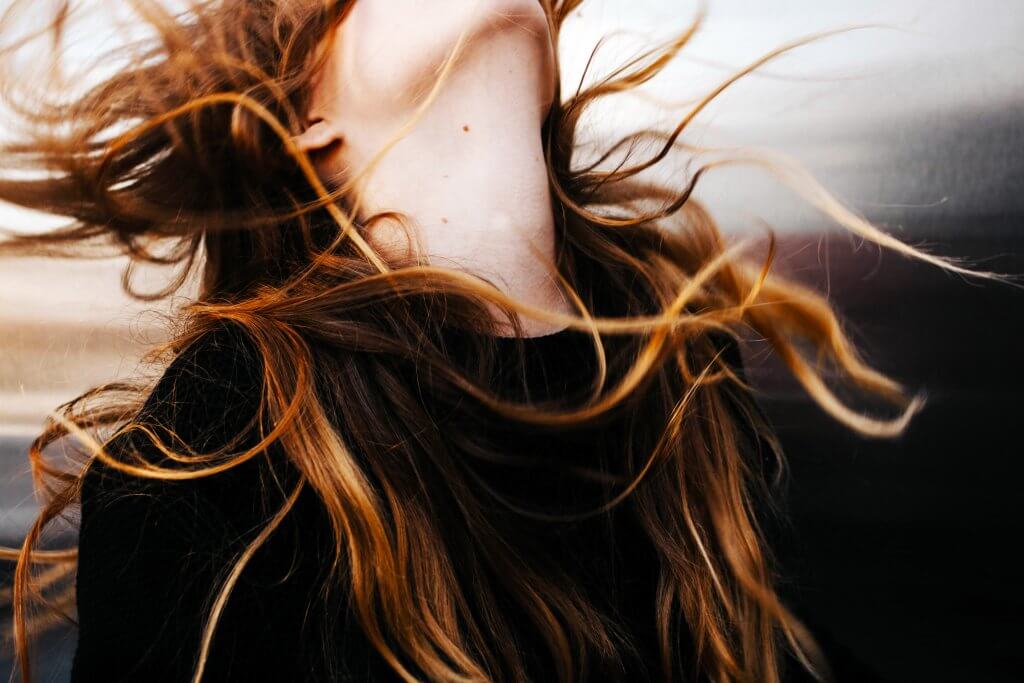
Our scalp naturally produces its own oil, called sebum, to lubricate our hair. Over time, sebum can begin to build-up and accumulate gunk, which is why we wash our hair.
When we use commercial shampoos, our scalp’s oil is stripped off by detergents, known as surfactants. The most widely used surfactants are sodium lauryl sulfate (SLS) and sodium laureth sulfate (SLES), which manifest themselves as the foam that allows you to lather your shampoo. So-called sulphate-free shampoos switch out SLS and SLES for different surfactants, most often no better but allowing them to make the claim of sulphate free.
Unfortunately, these chemicals strip far more oil than necessary and damage our hair, as the protective barriers are destroyed. This perpetuates a cycle that requires more and more products to try to correct, and is why commercial shampoos must be followed by conditioner, a product designed specifically to put back some of the oil and moisture the shampoo removed.
Some of the side effects of washing with surfactants include hair loss or thinning, as well as scalp irritation. Most surfactants are either palm oil derived or synthetically derived from non-renewable petroleum — both are detrimental to the environment.
The good news is, there’s absolutely no reason we need to continue to use products containing surfactants and sulphates. A natural shampoo does the job just as effectively — if not more so — without the problems associated with surfactants.
Bonus points: No shampoo means no soap scum in your shower = easier cleaning job.
Upon switching to a natural hair care solution like Le Lapin’s, your scalp will go through a transition period. This can be extremely frustrating and takes some patience to get through.
Why does this happen?
Because the natural process of sebum has been disrupted by the detergents in commercial shampoos, the sebaceous glands on our scalps (the things that secrete the sebum) become overactive, producing excess oil to counteract the effect of shampooing your hair.
They will continue to do this until they ‘learn’ that it’s no longer necessary to do so, and produce at a natural rate.
How to transition without the frustration
Many resources discussing the move from commercial shampoo to a natural alternative suggest the cold turkey approach. What does this mean? Ditch your commercial shampoo and immediately switch to your natural alternative. This results in your scalp suddenly not knowing how much oil is enough to produce, so it continues to do as it has done all the time you were using a commercial shampoo.
Going down the cold turkey road has one advantage: a quicker transition time. But the problem with it is that your hair will be constantly greasy, oily, and dirty until your scalp adjusts. And it doesn’t just feel this way. It looks it.
This is what causes most people give up on natural shampoos and return to their chemical-laden, but reliable, commercial products.
Instead of going through a period of insufferable hair, a better approach is to gently, slowly accustom your hair and scalp to a natural product. This allows anyone to transition to a natural alternative, minus the frustration.
If you usually shampoo daily, start by replacing one shampoo/conditioner with your natural alternative each week. If you shampoo less often, for example twice a week, experiment with replacing one shampoo/conditioner each week. If your hair becomes too oily with this, only use your natural alternative every three or four shampoos.
From there, steadily reduce the number of times you use commercial shampoo, using your hair as a guide. If you’ve replaced a shampoo/conditioner, and your hair is greasy, go back and reduce your commercial shampooing a little more slowly.
Another option to try is dry shampoo for an easy de-grease between washes.
Remember, when shampooing, it’s important to apply the product at the roots and work it in a downward motion from there. There’s really no need to shampoo the length of your hair, especially the ends. In fact, washing the length of your hair can be damaging and drying, promoting split ends and brittleness. The most important aspect of shampooing your hair is the scalp massage (also known as scritching your hair), which lifts dead skin cells, washes away excess oil, and promotes blood flow to the scalp.
Choosing this method over cold turkey can take quite a long time before your scalp has fully transitioned to your natural product. Expect it to take at least 8 weeks, although some people may need much longer than that.
With time and effort, your hair and scalp will balance out, your patience will be rewarded, and you can have the joy of healthy, natural hair that’s cleaner for longer.
Taking it one step further
Shampoo’s purpose is to cleanse the scalp of build-up, so it’s actually best to shampoo your hair only about every 7-10 days, or when there is actual build-up on your scalp. Hair that gets shampooed too often becomes dull and lifeless and susceptible to split ends — it can even lead to thinning or hair loss.
A lot of people believe that if they don’t shampoo their hair every day, they’ll have greasy hair. This is, in a sense, true, but only because they’ve trained their scalp to expect shampoo every day, meaning it’s producing oil at an extremely unnatural and overabundant rate. The more you shampoo, the more you need to shampoo. It’s a self-perpetuating cycle.
None of this is to suggest you can’t still wash your hair. Using only warm water in the shower, and foregoing the shampoo, you can give your hair a refresh as needed. This is particularly important for people who work out in the gym or work outdoors.
This is less problematic if you’re using a natural product, as your scalp will be normalised, not overactive.
In the same way that you transition from commercial shampoo to your natural alternative, slowly reduce the number of times you shampoo your hair, even with a natural product. The goal is to be able to go about a week before your hair starts to look or feel like it could use freshening.
The final stage, and the ultimate hair liberator, is to go water-only (WO). Simply wash your hair with nothing but warm water, as often or as little as your hair likes. You may like to wash with a natural shampoo on occasion to help lift build-up.
Hair rinses
Without interfering with your scalp’s natural oil production, you can keep your hair fresh by rinsing with only water. Cool water is preferable, but not necessary.
To do this, simply wet and rinse your hair without adding any product. Skip the scalp massage and just allow the water to wash away any dirt or perspiration.
For those of you with very long hair, or curly hair, you may prefer to keep your hair wrapped and dry during your regular showers and just shampoo as needed.
Tangled hair?
Hair becomes prone to tangling when the outer layer of your hair, the cuticle, becomes damaged. A healthy cuticle is smooth and gives us that silky smooth feel when we run our fingers through our hair. A damaged cuticle, on the other hand, has opened up and is almost barb-like, resulting in tangles and knots. The more damaged the cuticle, the worse the tangles.
Commercial shampoos, by stripping away the healthy protective barrier on our hair, are one of the main causes of damaged cuticles. Commercial conditioners attempt to mask this problem by coating the shaft of the hair, often in silicone (or other ‘cones’), to artificially give your hair the shine and slip you can achieve naturally, without any products.
Remember also not to pile your wet hair on your head when showering, as this is almost guaranteed to cause a tangled mess.

Not ready to take the plunge?
If you’re not ready to abandon your traditional shampoo and conditioner entirely, we won’t hold it against you. Not everyone is ready for the change.
Instead of eliminating your commercial shampoo and conditioner, try using a natural shampoo once or twice a week as a quick refresher. This allows you to give your hair a break from the powerful stripping of commercial shampoos without the need to entirely change your washing routine.
You can also try using Le Lapin’s hair oil and tonic in combination to nourish your locks.
Tips for healthy hair beyond the shower
- Detangle with a wooden comb and your fingers, not a brush. Start from the bottom of the strands and work your way up to your scalp.
- Invest in a wooden pin brush, as plastic brushes can cause static.
- Scritch your hair a couple of times a week by gently massaging your entire scalp with your fingers (not your fingernails) or a wooden comb. Do this when your hair is completely dry and detangled. Scritching is quite relaxing and can even help relieve stress.
- Preen your hair every week or so to distribute the natural oils through from the roots to the ends. Separate your hair into sections and use a wooden comb to gently pull the oil through the length of your hair. You can use your fingers to do this, but because your hands have their own natural oils, it can result in too much oil in your hair. If you have short hair or fine, straight hair, this step may be unnecessary, as brushing often distributes the oil effectively enough.
- If possible, let your hair air dry after squeezing excess water out with a soft flat weave cotton towel or Turkish towel, rather than a terry towel.
- Avoid heating your hair with blow dryers, curling irons, or straighteners too often.
- If your hair is long enough to braid, try a loose plait (or a messy bun) at night to avoid major tangles.
- Moisturise your hair with hair oil every so often to keep it soft and silky, focussing on the ends, which are the driest. Avoid applying the oil directly to your scalp or using too much, unless you intend to do a hair oil mask.
- To combat dryness or flakes, give your scalp a boost with Le Lapin’s Scalp Treatment Tonic. Section your hair, apply the treatment directly to the scalp at the part, and massage it in.
Eliminating harsh products from your haircare routine really does change your hair for the better. It won’t change the texture of your hair or the climate you live in, but it is liberating.
Once you’ve experienced natural hair, you won’t ever look back. We promise.
Featured image © iStock.com/skynesher